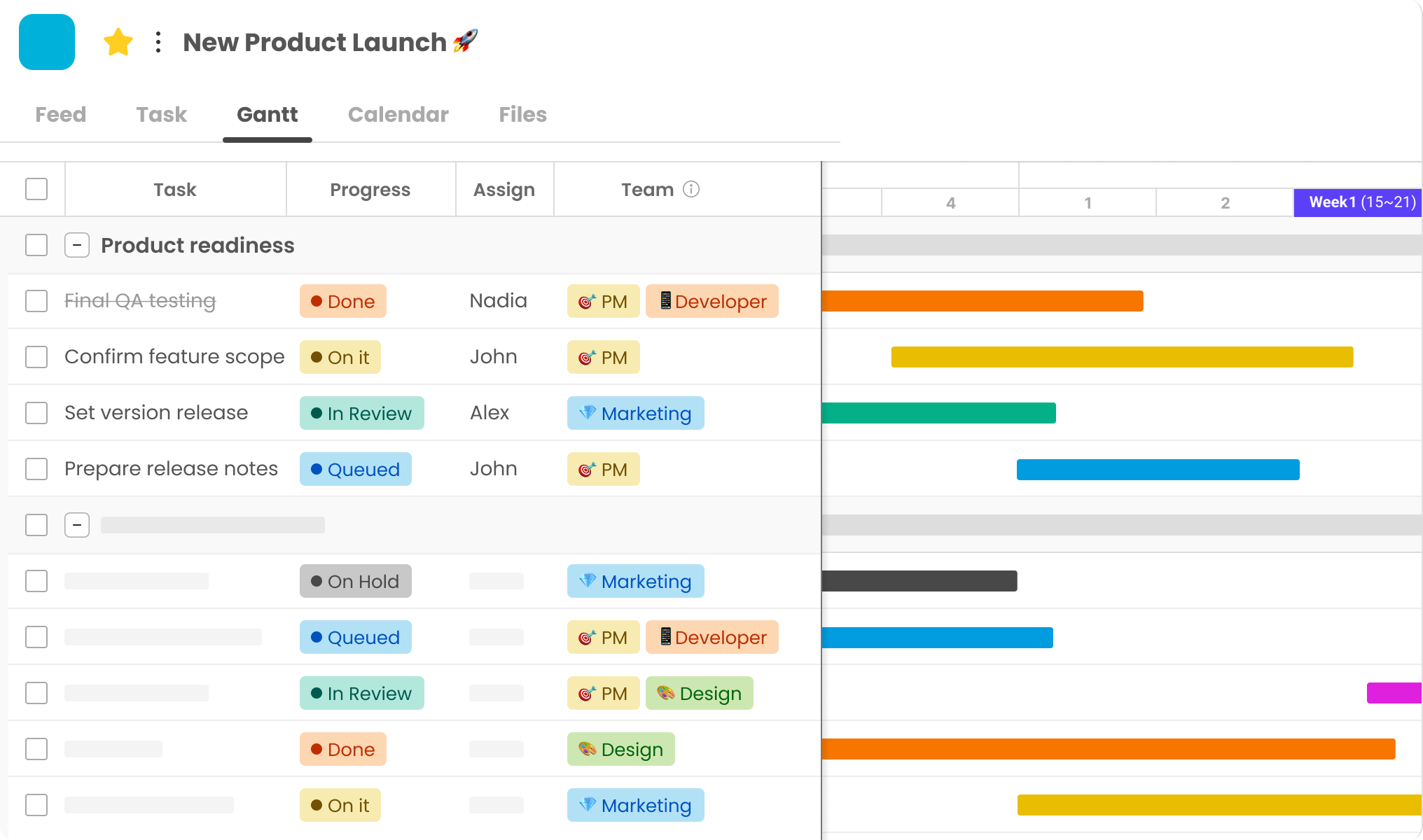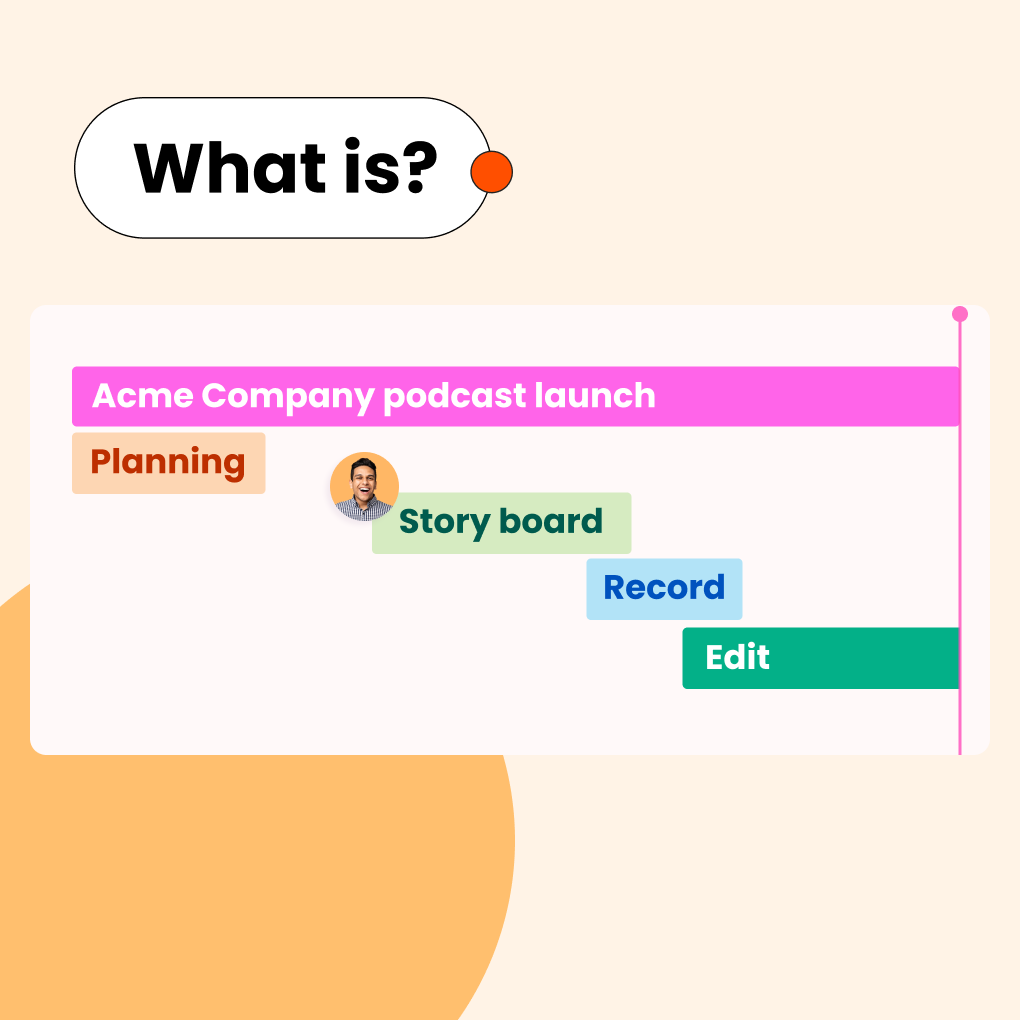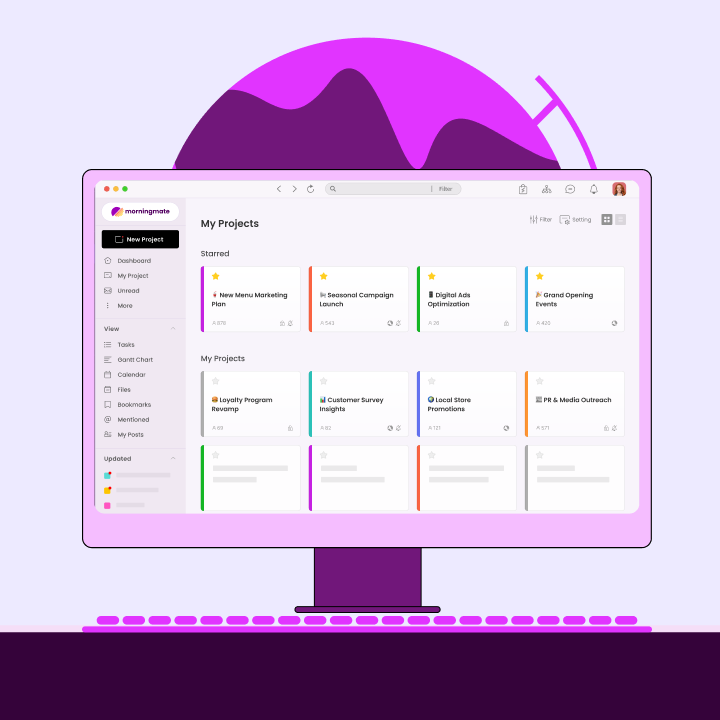What Is a Project Management Framework?
A project management framework is a systematic approach that helps teams effectively organize, plan, and execute projects. It offers a flexible roadmap with clear processes, defined roles, and essential tools for managing tasks, resources, and deadlines. The PMP framework, based on PMI standards, is well-regarded for its best practices in risk management and quality control. Ultimately, these frameworks aim to boost efficiency, reduce risks, and ensure successful project completion.
Different project management frameworks cater to various project needs. Some, like Agile, emphasize flexibility, while others, such as Waterfall, adhere to a strict step-by-step process. Selecting the right framework leads to smoother workflows, improved risk management, and successful project outcomes. The best choice depends on the project’s size, industry, and team dynamics.
When Is a Framework Needed?
A project management framework becomes crucial when projects involve multiple stakeholders, tight deadlines, or complex tasks. Smaller teams with straightforward goals may not require a formal structure, but larger projects benefit significantly from a defined approach. Industries such as construction, IT, and healthcare often rely on frameworks to ensure consistency.
Without a structured project management framework, teams may face unclear responsibilities, missed deadlines, and budget overruns. The right framework depends on the project’s size, industry demands, and team expertise.
Framework vs. Methodology: What’s the Difference?
Many people confuse project management frameworks with methodologies, but they serve distinct purposes. A framework provides flexible guidelines, while a methodology offers strict rules. Understanding this difference helps teams select the most suitable approach for their projects.
Definitions and Key Distinctions
A project management framework is a structured yet adaptable system that outlines processes without rigid steps. Examples like the PMP framework or program management framework offer best practices that teams can modify. In contrast, a methodology consists of a fixed set of rules, such as Scrum or Waterfall, that dictate how work should be performed. The key distinction lies in flexibility—frameworks guide, while methodologies prescribe.
Real-World Examples for Comparison
A construction company might use a project framework like PRINCE2 to manage large builds while adapting processes as necessary. Conversely, a software team using Agile (a methodology) must adhere strictly to sprints and daily standups. Another example is the PM framework versus Six Sigma—one provides structure, while the other enforces specific quality control steps. The choice between a project management framework and a methodology depends on the level of flexibility required for the project.
Benefits of Using a Project Framework
Implementing a structured project management framework offers clear advantages to any organization. These systems help teams operate more efficiently while minimizing common project challenges. The right PM framework can transform chaotic workflows into smooth, predictable processes that yield consistent results.
Standardization
A well-designed project framework establishes uniform processes across all projects. This standardization means teams do not have to reinvent approaches for each new initiative. For instance, the PMP framework creates common terminology and procedures that professionals worldwide recognize.
Large organizations often adopt a program management framework to ensure consistency across multiple related projects. Standard methods reduce confusion and facilitate onboarding new team members while maintaining quality standards.
Better Risk and Resource Management
Effective management frameworks incorporate processes for early identification and resolution of risks. They also provide tools for optimal resource allocation, preventing shortages and excessive staffing. A robust project management framework enables managers to identify potential budget overruns or scheduling conflicts before they escalate.
This proactive approach saves time and money while keeping projects on track. The structured nature of these systems ensures that critical elements are not overlooked during planning or execution.
Improved Team Alignment
One of the biggest challenges in project work is ensuring everyone is aligned. A clear PM framework defines roles, responsibilities, and communication protocols, so all team members understand expectations. When using a project framework, stakeholders receive regular updates through established channels, reducing the risk of misinformation.
This alignment is especially valuable in complex initiatives where multiple departments or external partners must coordinate efforts. The transparency built into most project management frameworks fosters trust and keeps teams focused on shared goals.
Key Components of a Project Management Framework
Every effective project management framework consists of core elements that work together to guide projects from start to finish. These components provide structure while allowing flexibility to adapt to different project needs. Understanding these building blocks helps teams implement the right PM framework for their specific requirements.
Project Life Cycle
The project life cycle forms the backbone of any project framework, outlining key phases from initiation to closure. Most frameworks follow five stages: project initiation, planning, execution, monitoring, and completion. The PMP framework emphasizes this structured approach to ensure nothing is overlooked.
In a program management framework, these phases may repeat across multiple interconnected projects. The life cycle provides teams with clear milestones and decision points, helping maintain focus throughout the project duration.
Project Control Cycle
While the life cycle propels the project forward, the control cycle ensures it remains on track. This component of a management framework includes regular check-ins, performance measurements, and corrective actions. Teams using a project management framework typically establish reporting schedules, quality checks, and risk assessments as part of this process.
The control cycle acts as a quality assurance system, identifying issues early before they escalate. Effective control mechanisms distinguish successful projects from those that veer off course.
Tools & Templates

Practical resources make any PM framework applicable in real-world situations. Most frameworks provide standardized documents like project charters, risk registers, and status reports. Digital tools such as Gantt charts, Kanban boards, and collaboration software often complement these templates. At the program management framework level, you might find portfolio dashboards and resource allocation matrices.
These ready-to-use tools save teams time while ensuring consistency across projects. When properly implemented, they transform theoretical frameworks into practical solutions that teams can utilize daily.
10 Common Project Management Frameworks
Project teams utilize various frameworks to structure their work according to project requirements, industry standards, and team preferences. These organized approaches facilitate effective management of tasks, resources, and timelines. Some frameworks adhere to strict guidelines, while others allow for greater flexibility. The ideal choice depends on the project’s complexity, team size, and desired outcomes.
Agile
Agile prioritizes flexibility and continuous improvement. Teams operate in short cycles known as sprints, delivering small portions of the project incrementally. This method is particularly effective for projects with evolving requirements, such as software development. Regular feedback from stakeholders allows teams to adjust priorities as necessary.
Agile promotes collaboration and quick adaptation to change rather than adhering to a rigid plan. It is well-suited for creative projects and fast-paced industries where adaptability is crucial.
Waterfall
Waterfall employs a linear approach, completing each project phase sequentially before moving on to the next. This traditional method is best for projects with clear and stable requirements, such as construction or manufacturing. Each stage—planning, design, execution, testing, and delivery—follows a specific order. Once a phase concludes, making changes becomes challenging, making Waterfall less adaptable than Agile.
However, its clear structure helps teams stay organized when managing predictable projects with well-defined goals.
Scrum
Scrum is a specific Agile framework that operates in fixed-length sprints, typically lasting two to four weeks. Teams conduct daily standup meetings to discuss progress and obstacles. A Scrum Master facilitates the process, while the Product Owner prioritizes tasks. Scrum is effective for complex projects that require frequent adjustments.
It fosters transparency through regular reviews and planning sessions. Many software teams adopt Scrum to break large projects into manageable segments while maintaining flexibility.
Kanban
Kanban visualizes workflow using boards with columns labeled “To Do,” “In Progress,” and “Done.” Teams move tasks across the board as work progresses. Unlike Scrum, Kanban does not utilize sprints; instead, work flows continuously based on capacity. This method is ideal for ongoing operations, such as support teams or marketing campaigns, where priorities frequently shift.
Kanban helps identify bottlenecks by making the workflow visible to all team members. It is easy to implement and can complement other frameworks effectively.
Critical Path Method (CPM)
CPM identifies the longest sequence of dependent tasks within a project timeline. These critical tasks determine the overall project duration. By concentrating on these key activities, teams can prevent delays. CPM is particularly useful for complex projects with numerous interdependent tasks, such as event planning or product launches. It enables managers to allocate resources efficiently and identify potential scheduling conflicts early. Construction and engineering projects often rely on CPM for its precise scheduling capabilities.
Critical Chain Project Management (CCPM)
CCPM emphasizes resource availability over strict task deadlines. It incorporates buffers into the schedule to accommodate uncertainties. Teams focus on completing the current task before initiating new ones, reducing multitasking and enhancing concentration. CCPM is effective for projects with limited resources or high uncertainty, such as research initiatives. It helps teams deliver projects more quickly by optimizing resource utilization across tasks.
Six Sigma
Six Sigma aims to minimize defects and enhance quality through data-driven methods. It follows a structured process known as DMAIC: Define, Measure, Analyze, Improve, Control. Manufacturing and production teams frequently use Six Sigma to eliminate errors. The framework relies heavily on statistical analysis to identify and rectify process flaws. While not strictly a project management method, Six Sigma principles assist teams in delivering consistent, high-quality results. Many organizations integrate it with other frameworks for improved process control.
PRINCE2
PRINCE2 (Projects IN Controlled Environments) is a process-based framework widely used in Europe. It divides projects into manageable stages with clear controls. PRINCE2 precisely defines roles and responsibilities, making it suitable for large, complex projects. Government and construction projects often adopt this method. The framework includes detailed documentation and regular reviews to maintain oversight. PRINCE2 is ideal for organizations that require strong governance and accountability in their projects.
PMBOK
The Project Management Body of Knowledge (PMBOK) is a guide published by the Project Management Institute (PMI). It outlines best practices rather than prescribing specific methods. PMBOK covers ten knowledge areas, including scope, time, cost, and quality management. Many project managers apply PMBOK principles alongside other frameworks. It is particularly valuable for those pursuing Project Management Professional (PMP) certification. The guide serves as a comprehensive reference for managing projects of all types and sizes across various industries.
Hybrid Approaches
Many teams blend elements from different frameworks to create customized solutions. A common hybrid combines Waterfall’s structure with Agile’s flexibility. For instance, a hardware team might use Waterfall for physical production while applying Agile for software components. Hybrid approaches enable organizations to tailor methods to their specific needs, effectively managing different project aspects that require distinct management styles. Clear communication is essential when integrating frameworks to avoid confusion.
6 Types of Popular Project Management Methods →
Program Management Framework: A Broader View
While project frameworks focus on individual initiatives, program management takes a broader perspective. A program management framework coordinates multiple related projects to achieve overarching organizational goals. This approach ensures that all projects work together effectively rather than in isolation.
What Is a Program Framework?
A program framework provides a structure for managing interconnected projects with shared objectives. Unlike a single project management framework, it addresses complex initiatives that span departments or business units. Program frameworks include governance models, risk management strategies, and resource allocation systems designed for larger-scale efforts. They help organizations align multiple project teams toward common strategic outcomes while maintaining visibility across all work streams.
Program vs. Project Framework
The primary difference lies in scope and purpose. A project framework guides the delivery of specific outputs within defined constraints, such as time and budget. In contrast, a program management framework focuses on achieving strategic benefits by coordinating multiple projects. Projects have clear end dates, while programs often run continuously to support business objectives.
Program frameworks emphasize managing dependencies between projects, tracking benefit realization, and aligning stakeholders at higher organizational levels. Both frameworks work in tandem, with program management providing the overarching structure under which individual projects operate.
How to Choose the Right Framework for Your Project
Selecting the most suitable project management approach requires careful consideration of several factors. The right framework should align with your team’s working style, project requirements, and organizational goals.
Based on Team Structure
Small, co-located teams often thrive with flexible frameworks like Agile or Scrum. Distributed teams may benefit from more structured approaches that emphasize clear documentation. Consider team experience—new members may find defined processes in frameworks like PRINCE2 helpful, while experienced teams can adapt to more flexible methods.
Based on Project Type or Complexity
Simple, predictable projects are well-suited for linear frameworks like Waterfall. Complex, evolving initiatives require iterative approaches like Agile. High-risk projects benefit from frameworks with robust control mechanisms, while creative work flourishes in more adaptable systems.
Based on Stakeholder Requirements
Projects that involve frequent stakeholder input are best suited for frameworks that emphasize collaboration, such as Scrum. When stakeholders require fixed deliverables by specific deadlines, more predictive frameworks are preferable. Industries with heavy regulatory requirements often necessitate documentation-rich approaches.
Best Practices for Implementing a Framework
Successful adoption of a framework requires careful planning and adjustment. Start small to test effectiveness before rolling it out organization-wide.
Start with a Pilot Project
Select a low-risk project to trial the framework. This allows teams to learn the method while minimizing potential disruptions. Evaluate what works and what needs adjustment before scaling up.
Train the Team
Ensure all members understand the framework’s processes and their roles. Training reduces resistance to change and enhances adoption rates. Incorporate practical exercises to build confidence in using the new approach.
Measure Framework Effectiveness
Track metrics such as project delivery times, budget adherence, and team satisfaction. Regular reviews help identify areas for improvement. Adjust the framework based on real-world performance rather than theoretical ideals.
Final Thoughts: Aligning Framework with Business Goals
Choosing and implementing a project management framework should not merely be about following a set of rules. The most successful organizations select approaches that directly support their strategic objectives. A framework should serve as an enabler, helping teams deliver value while aligning with the company’s broader vision.
The best framework is one that integrates seamlessly with the business’s operations. It should enhance efficiency without introducing unnecessary bureaucracy. When evaluating options, leaders should consider whether the framework will help achieve key business outcomes, rather than simply adhering to industry trends.




